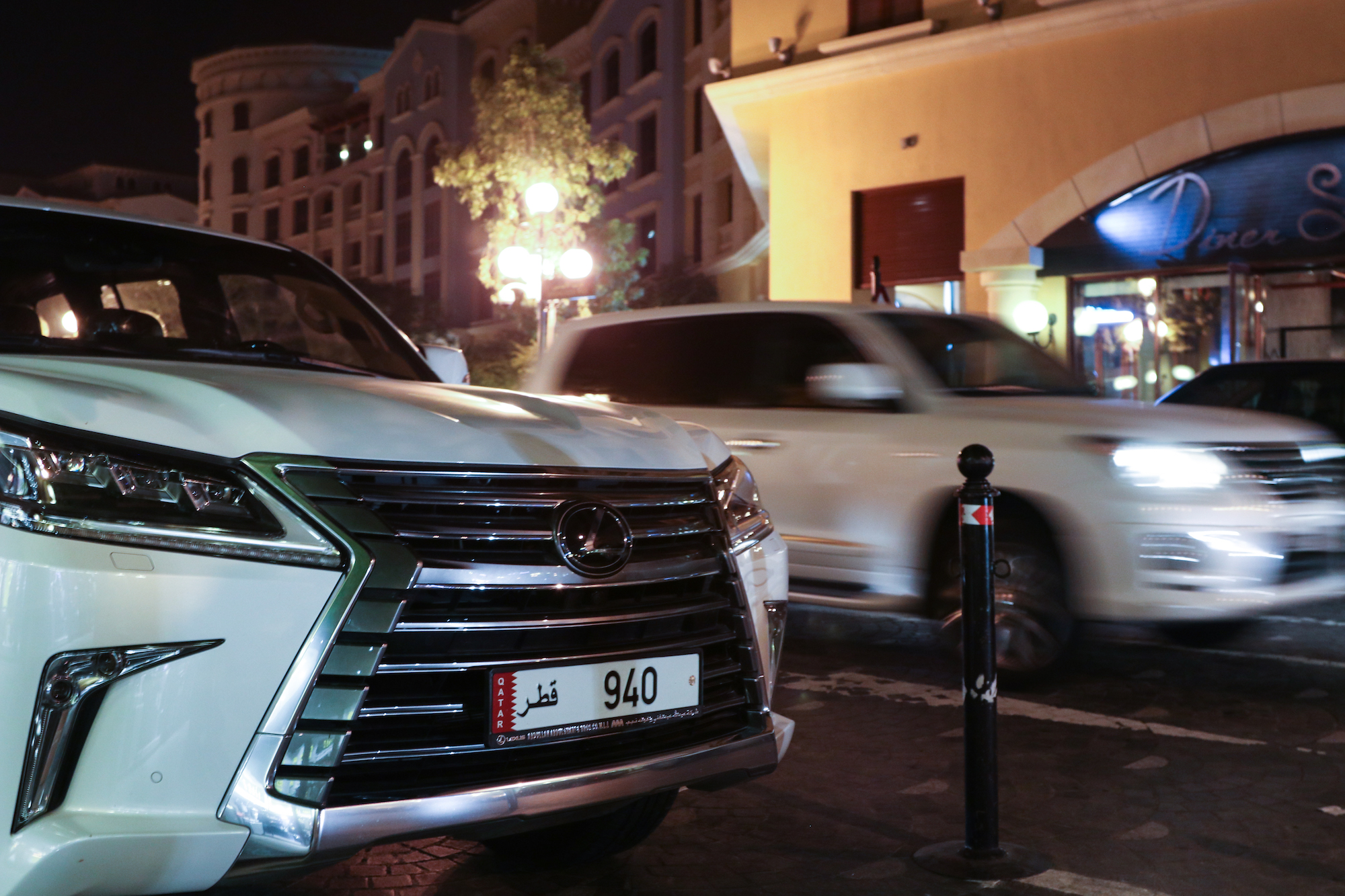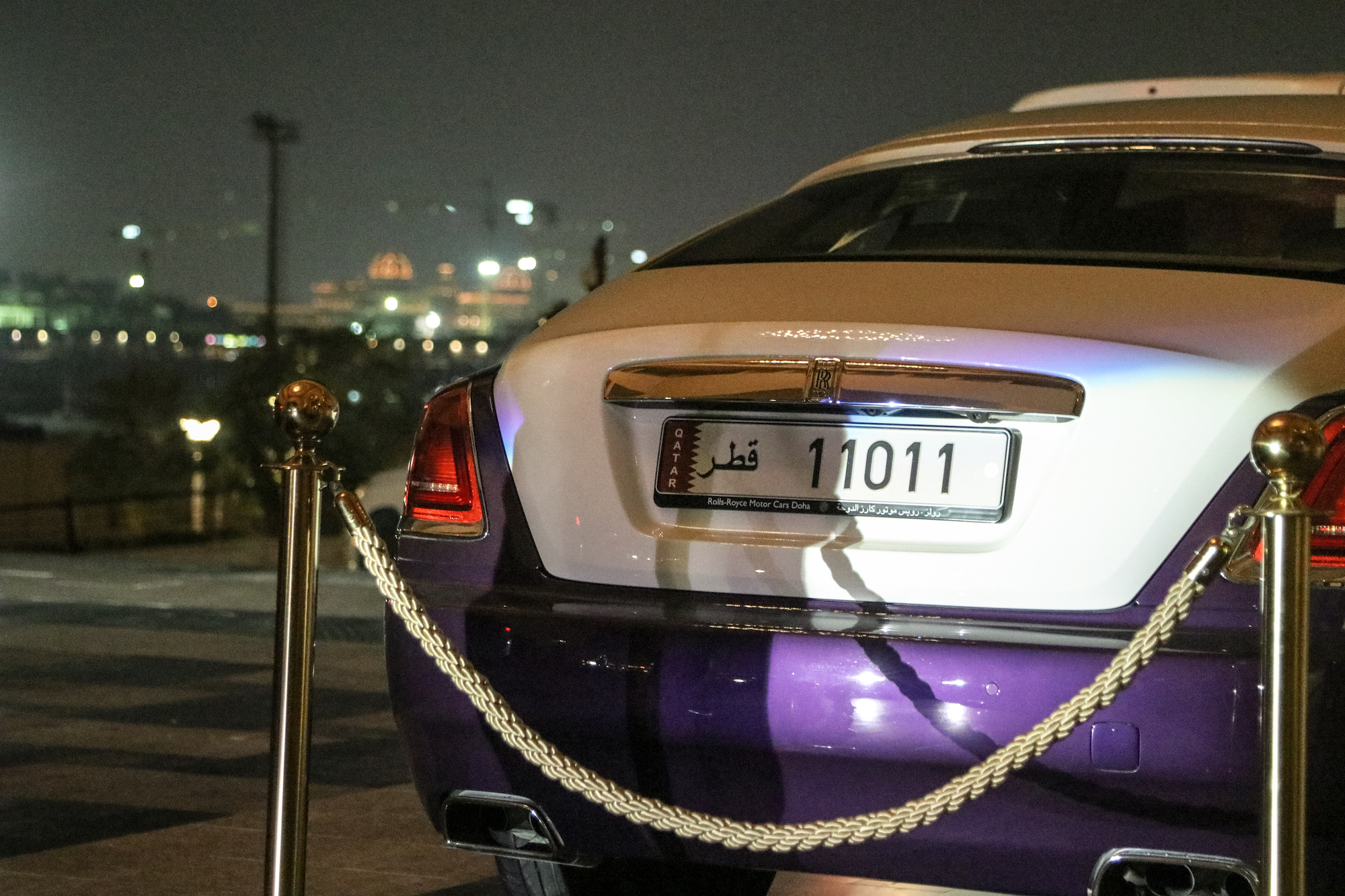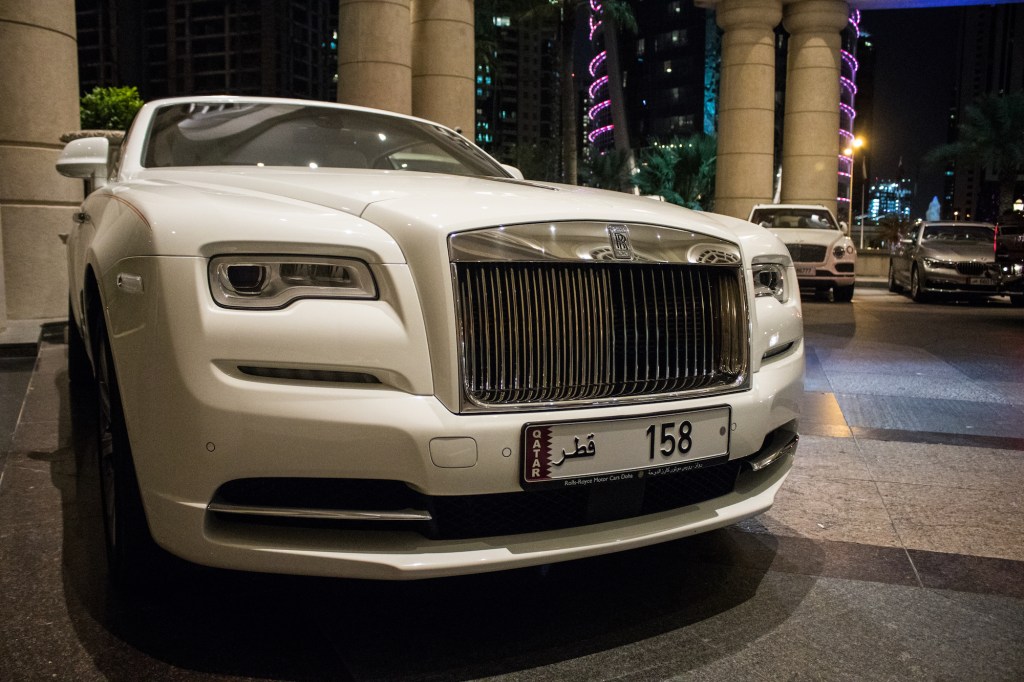Massive oil and natural gas reserves lie beyond shores that boast an expanding skyline of skyscrapers. Construction workers toil in the hot desert air to build stadiums for the 2020 World Cup. Qatari men, dressed in white, pressed robes, drive the streets in Bugattis, Bentleys, and Ferraris.
But designer brands and extravagant cars are the norm for citizens in the country with the world’s highest per-capita GDP. What luxury item is more impressive to flaunt in the Persian Gulf? License plates.
Videos by VICE
“It’s to show people that one is special, to reflect his situation,” said Mohammed Saad, a Qatari national waiting at the valet outside of the Four Seasons Hotel in the country’s capital of Doha. “Because the economical situation for the Qatari people is high.” Plates in Qatar are a sign of status, and the annual turnover in the country’s market is well within the tens of millions.
“The numbers three and seven are not as popular, not as nice,” said Abdelrahman Moustafa, a sales consultant at Bentley Qatar. “Many people want four and zero. And one is the king of the numbers.”

But opinions differ. Abdullah Ahmed, another Qatari waiting at the valet of the Four Seasons Hotel, maintained that zero, nine, and eight are best. Meanwhile, Hamid Alkaabi, a Qatari out for dinner at Doha’s Shangri-La Hotel, said that most people like zero, two, and five.
What’s indisputable is that plates with repeated digits, digits in sequences, or those containing few numbers—only the royal family is rumored to have two-digit plates—go for the highest prices. Saad pointed to a Rolls Royce outside the Four Seasons with a plate reading “158.” Because it’s only three digits, it’ll go for around $412,000 USD, or maybe more, he said.
Saad laughed. “And the car is less than one million.”
The pricy plates are sold via official auctions administered by Qatar’s Ministry of Interior and private high-end auction houses. There’s also a “black market” where plates are routinely peddled. At a private May 2016 auction at AlBahie Auction House, bidders shelled out a total of $4.1 million on 30 special plates, according to local media. Bidders were required to pay $13,700 front to participate.
A Qatari man paid more than $960,000 for a plate with the number 411. The number 9999 went for $851,000.
But the plate trend is a controversial topic in a country where the citizens have a reputation for excessively spending on superficial items. Comments in local online forums say the plate frenzy encourages narcissism and superficiality in Gulf society.

“I don’t like it because I don’t like spending money for nothing,” said Khalid Mohammed Alemadi, a Qatari who bought his five-digit plate six years ago for $137. When his friend asked to buy it off him for a 2,000 percent increase, he refused.
“I didn’t want to sell it to him. I said, ‘Why do you want this? It’s only for show.’”
Others argue that plates aren’t just signs of vanity, but are viable financial investments. Like high-end art, they can accrue value over time.

Saad said he sold his previous four-digit plate for a $54,900 profit.
Mohammed Alkaabi, an engineer at Shell, made the point that if a Qatari does buy a plate as a means of showing off, he does so for a small set of eyes.
“It’s like Qataris are trying to prove to themselves how wealthy they are,” Alkabi said. “Most of the population here are foreign workers and probably have no idea how much these things are worth. All they see are the nice cars.”
Follow Jenna Belhumeur on Twitter.




